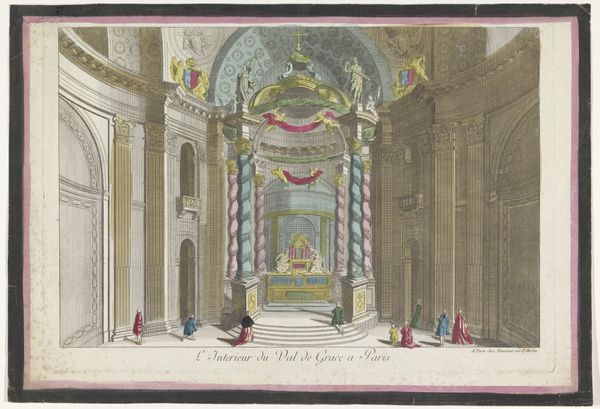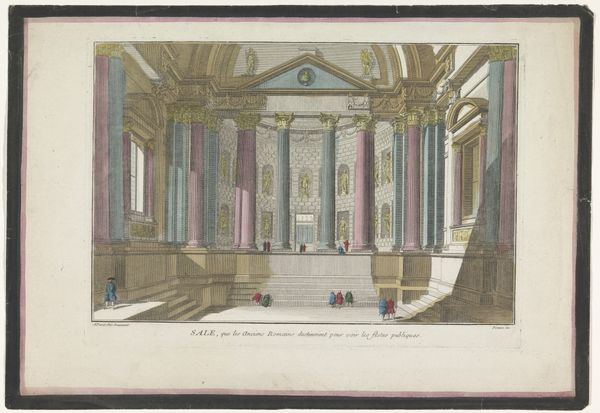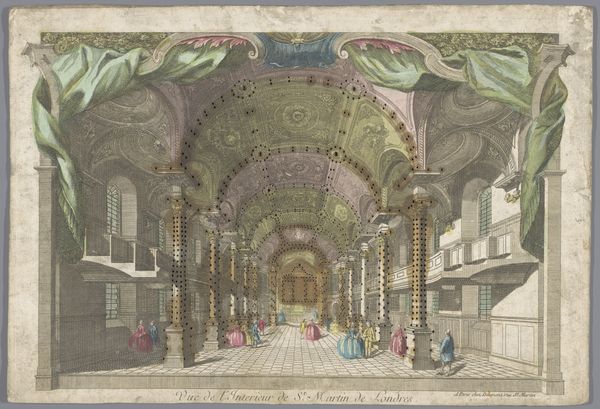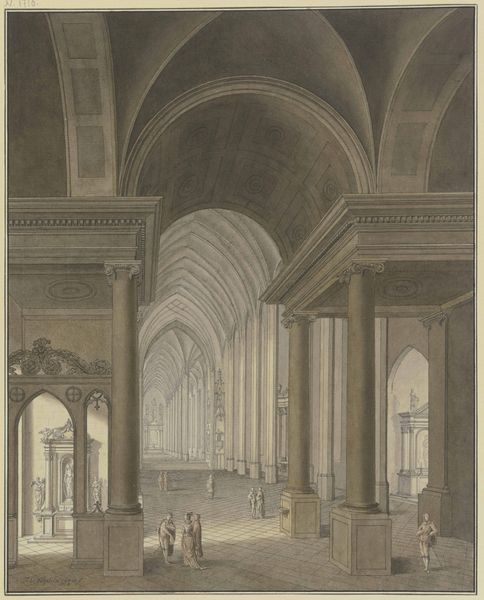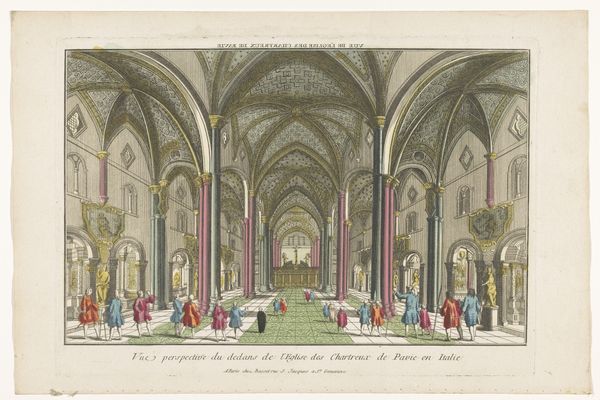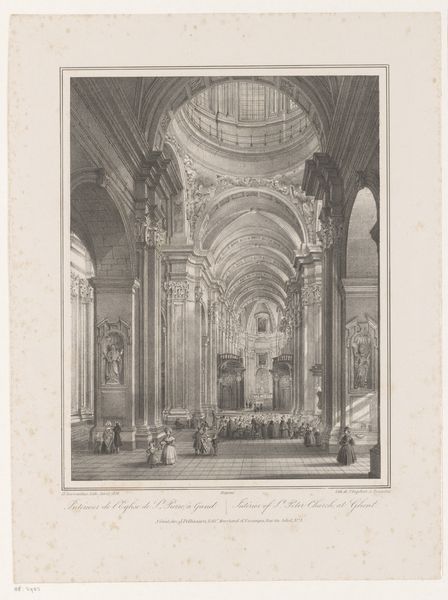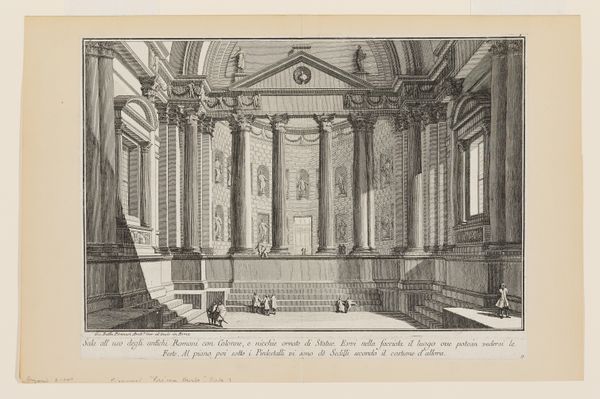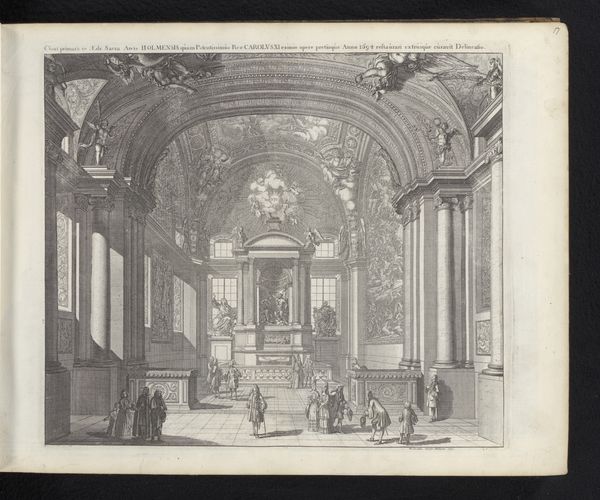
Gezicht op de galerie van het Palazzo Colonna te Rome 1745 - 1775
0:00
0:00
print, etching, engraving, architecture
#
baroque
# print
#
etching
#
perspective
#
cityscape
#
watercolour illustration
#
history-painting
#
engraving
#
watercolor
#
architecture
Dimensions: height 276 mm, width 395 mm
Copyright: Rijks Museum: Open Domain
Editor: So, this is "Gezicht op de galerie van het Palazzo Colonna te Rome," an etching by Jean-François Daumont, created sometime between 1745 and 1775. The elaborate baroque style is immediately apparent, but what strikes me is how much it emphasizes the sheer *display* of wealth and taste. What stands out to you? Curator: Exactly! What we're seeing here isn't just a depiction of a gallery, but a performance of power through art. Think about the context: the Colonna family, powerful and politically influential in Rome, strategically uses their collection to broadcast their status. This print becomes another layer of that strategy, circulating an image of their grandeur to a wider audience. Editor: It’s like the art itself is a political statement? Curator: Precisely! Daumont isn’t merely recording the gallery; he's participating in constructing the Colonna's image. The exaggerated perspective, the meticulously rendered detail – it all reinforces the impression of overwhelming magnificence. Consider also the figures within the print. They appear almost secondary, dwarfed by the architecture and art, further emphasizing the dominance of the Colonna collection. Editor: That's a great point about the figures. It almost makes the viewers *in* the image seem less important than being seen *with* the collection. How might engravings such as this one have shaped the contemporary art world? Curator: Prints like these were vital for disseminating knowledge about art and architecture. They acted as a form of cultural currency, allowing individuals who might never visit Rome to experience, secondhand, the grandeur of collections like the Colonna's. This accessibility, though mediated, helped establish canons of taste and influence artistic trends across Europe. So, in a way, the political and social force of art has become more evenly distributed across European society thanks to pieces such as these. Editor: That's fascinating – almost a proto-Instagram for the 18th century. I never thought about prints being such an active part of shaping cultural ideas of art before. Curator: Indeed. It’s a potent reminder that art is never viewed in a vacuum, but through layers of social, economic, and political forces.
Comments
No comments
Be the first to comment and join the conversation on the ultimate creative platform.
